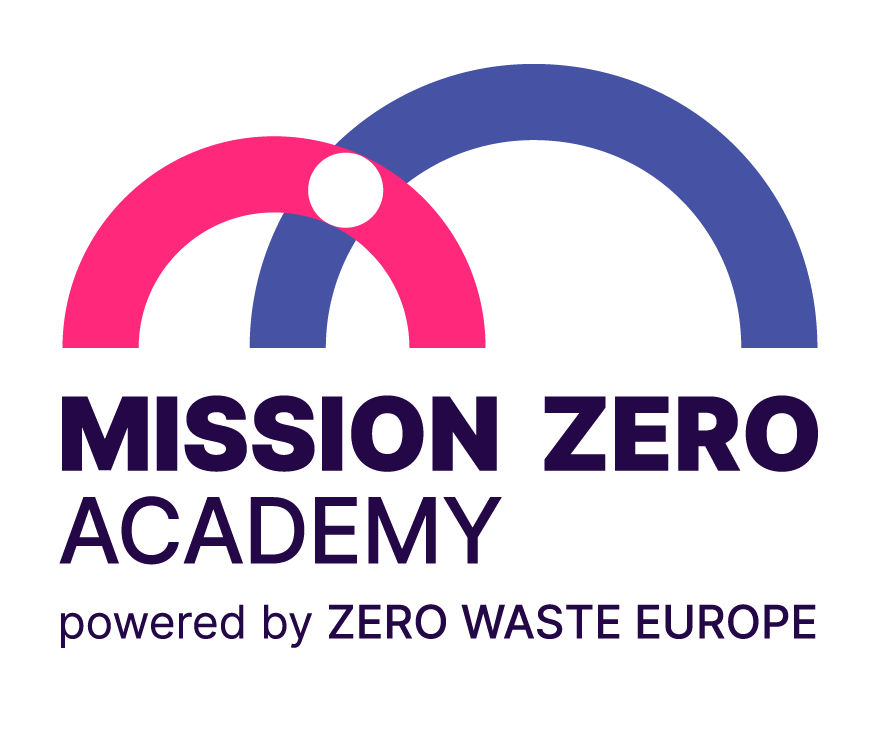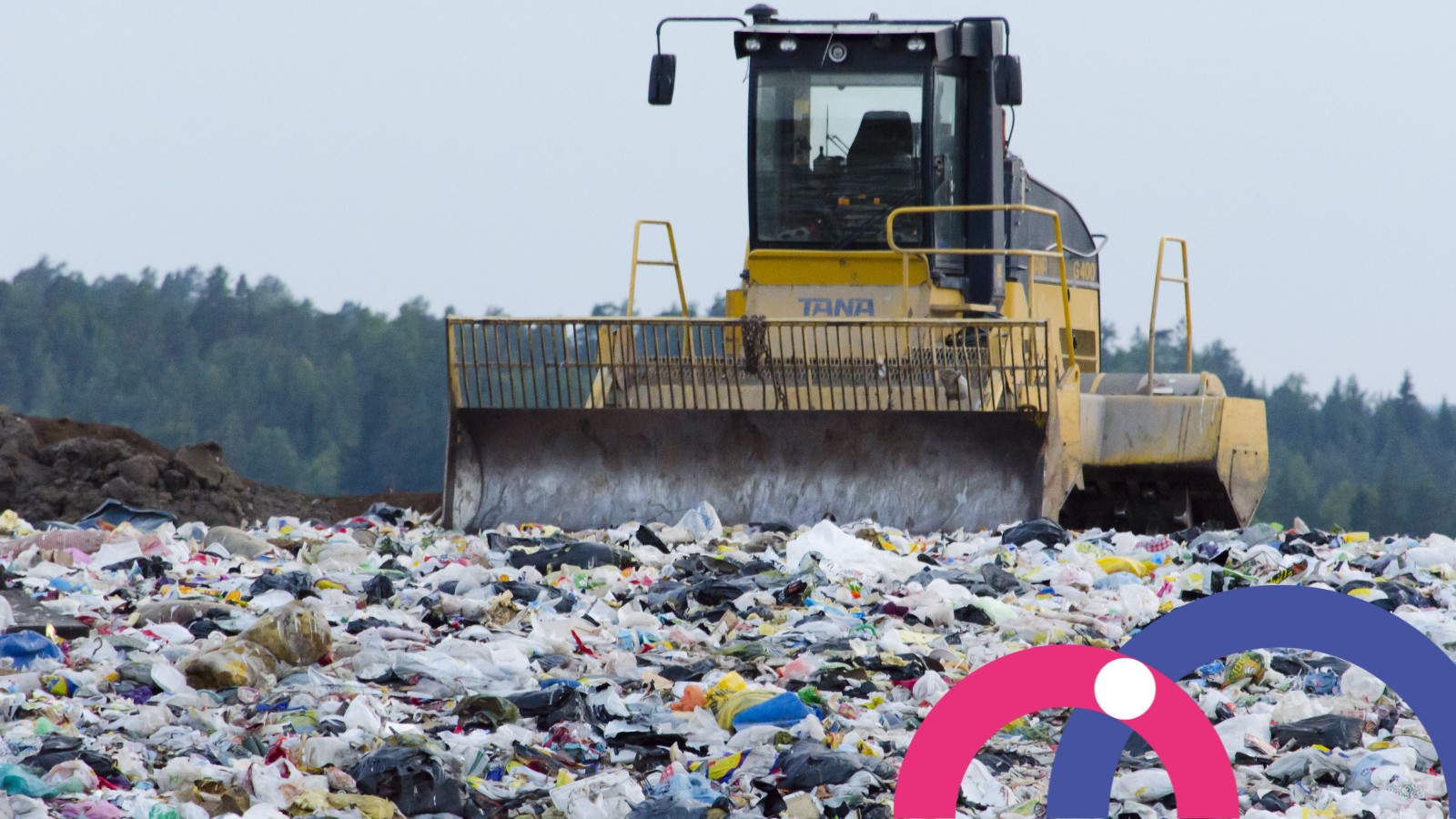The second-largest driver of climate change is methane, a greenhouse gas over 80 times more potent than carbon dioxide, taken over a twenty-year period. In the waste sector, landfills and wastewater make up about 20% of human-caused methane emissions, which occur when organic materials decompose without oxygen. That’s why transforming the waste sector is a key opportunity to help solve the climate crisis in this ‘decade of action’.
Methane emissions from biowaste
When organic waste, like food and garden waste, is disposed of in landfills, it decomposes and emits methane and carbon dioxide. Many municipalities and governments do not yet impose separate collection or recycling policies for biowaste, which we know to be effective and relatively cheap. If we want to make a significant difference and cut methane emissions in the next 10 years, it is necessary to re-examine waste policies as we know them.
Reduction of emissions in the waste sector based on the food waste hierarchy
There are various strategies to reduce emissions in the waste sector significantly. For example, reducing the food loss and the creation of waste can reduce methane emissions by as much as 15% by 2030. An effective tool for prioritizing strategies is examining the food waste hierarchy, which prioritizes interventions based on their environmental impact.
When organic waste is managed according to the hierarchy, solid waste methane emissions can be reduced with significant co-benefits, as well as avoiding costlier, riskier alternatives like landfill gas capture and waste incineration. Let’s explore.
- Organic waste prevention
Methane reduction in the waste sector starts with prevention. After all, every piece of organic waste material that never enters the waste stream, mitigates the methane that it would have generated in a landfill. Aside from that, upstream emissions from its production and transport are also kept down.
Worldwide, food waste specifically contributes to 10% of GHG emissions. The supply chain of organic goods offers opportunities to reduce waste at every stage, from reforming subsidies that encourage overproduction and implementing regulations for food donation in supermarkets, to educating consumers about how to prevent waste. One example is the food-waste prevention law in France, which imposes fines on supermarkets that exceed a set cap for discarded food.
- Waste recovery & separation
In places where direct prevention doesn’t work, separation and recovery is the best next thing. There will always still be some organic waste generated, even with effective waste prevention programs. It’s in these cases critical that organic materials get separated from other waste at the source, such as homes and businesses. When separately collecting biowaste, it can be repurposed or recycled properly, and it will not contaminate other materials for recycling purposes, such as paper, glass, and metal.
- Repurposing of food waste
Discarded food can be redirected to people in need or repurposed for preserves like jams, for example. This requires collaboration between food banks, grocery stores and local governments. The city of Milan, Italy, is a great example of the possibilities. The overhaul of the waste sector has achieved 130 million tonnes of food waste saved annually in just three years, leading by example in the goal of reducing 50% in food by 2030.
Another way to repurpose organic waste is to reuse it to feed livestock. For example, over the last two decades, South Korea has succeeded in increasing the recycling of food waste from 2% to a whopping 95% by composting it and turning it into fertilizer and animal feed. This may avoid the landfill methane emissions that come with conventional, energy-intensive feed crops. Even though there aren’t enough estimates of how much methane can be reduced from using organic waste for this use just yet, one lifecycle analysis found that it can cut more than composting or anaerobic digestion.
- Material recycling
Speaking of composting and anaerobic digestion, these steps are the next tier in the food waste hierarchy. Composting, when well-managed, produces only minimal amounts of methane, of which most is broken down by bacteria. Composting organic waste can prevent as much as 99% of emissions that would otherwise be emitted in landfills.
Anaerobic digestion (AD) is a safe biological process in which biowaste is broken down by microorganisms in the absence of light and oxygen. Unlike landfills, which constantly leak methane into the atmosphere, AD collects methane in sealed vessels until burned as fuel, converting it into biogenic CO2. The small amounts of residual organic matter from AD, called digestate, can be composted and used as fertilizer.
Ever though AD sounds promising, it could lead to undercutting other options in the hierarchy, such as prevention or composting, due to continued need for organic waste. Therefore, it should be part of a zero-waste system, not the final solution.
- When all else fails: Bio-stabilization
Some organic waste may still end up in landfills, although we should avoid it as much as possible. However, if it does, it should never be landfilled without first undergoing biological stabilization. This provides a final ‘screen’ for organic materials, making them less dangerous to the environment when landfilled.
Emissions from active landfills vs. closed landfills
It’s worth noting that even when organic waste is avoided completely, methane emissions from past landfill discards will still need to be addressed, as landfills can continue to emit methane for decades after we stop using them. Luckily, closed landfills currently only represent about 9% of emissions, whereas active landfills contribute the majority.
Expert research suggests that by covering landfills with bio-materials, such as compost or other organic materials, can reduce the emissions from closed landfills by 63% on average, or may even generate ‘negative’ emissions by drawing methane from the atmosphere.
The elephant in the room: waste incineration
Gas capture from existing landfills is a final option for remediating methane emissions after implementing zero-waste strategies. In this process, landfills are fitted with tubes that allow landfill gas to be collected. It can then be burned for energy, turning the methane into CO2. However, this method often leads to a leakage of methane into the atmosphere and the process itself is more carbon-intensive than composting or AD. Similar to AD and incineration, it also may incentivize the dumping of waste back into landfills, rather than to be composted or repurposed.
Incineration is the one method that should never be used to manage organic waste. It’s highly polluting, expensive and carbon-intensive. Additional costs come from the costs related to pollution control, air quality monitoring wastewater management and more. While it can reduce methane emissions from organic waste, it generates a lot of fossil-based CO2 when plastics and synthetic textiles are burned along with municipal waste. When used to produce energy, so-called ‘waste-to-energy’ incinerators produce more emissions per unit of energy than any other source.
Global and local actions to reduce methane emissions
To achieve global objectives, countries should adopt national methane action plans, with country-specific policies and measures tied with international commitments. The next 10 years are a crucial period of needed climate action. According to the UN Environment Programme’s Global Methane Assessment (GMA), methane emissions should be reduced by at least 45% in the next eight years.
As Professor Dave Reay from the Edinburgh Climate Change Institute said, meeting climate goals “will need every climate action trick in the book” and cutting methane should be on page one. Prevention of organic waste emissions is one of the most powerful ways to reduce methane emissions, including preventing upstream emissions from its production, management, and transport.
Become a Zero Waste City in your journey to reduce methane emissions
Municipalities and governments are at the forefront of the move toward better waste management and reducing methane emissions. In addition to helping limit global warming to 1.5 °C, their policies will create jobs and other economic opportunities. The world’s first Zero Waste Cities (ZWC) Certification is the perfect way for European municipalities to certify their zero waste journey and comply with the EU deadline to make biowaste collection mandatory for all member states by the end of 2023.
Learn more about how to become a certified Zero Waste City here.
This article is based on the report ‘Methane matters: A comprehensive approach to methane mitigation’ by the Changing Markets Foundation, the Environmental Investigation Agency and the Global Alliance for Incinerator Alternatives.





